Hello W4D friends! This week we’re bringing you a weeknight dinner recipe that ALL cooks in one pan. Who doesn’t love that?! Plus, we’re kicking off a new feature that highlights our Kitchen Essentials. We’ll feature things we can’t live without, and which versions are worth your money.
A ONE TRAY DINNER SLAY: CHICKEN & COCONUT RICE TRAY BAKE
AU: Sometimes, when I’m going to cook dinner, the idea of making separate components—and then cleaning the dishes to make those components—is so daunting that I cave and order takeout.
NO MORE!
I’ve now developed enough Sheet Pan meals (what the Brits call “Tray Bakes”) for W4D that I can throw together a meal that feels wholesome without much effort. And that saves me money, saves the planet (less food waste!), and saves my sanity.
EK: You really have! The thing that has turned me off from sheet pan meals in the past is that they were just ingredients thrown onto a sheet pan and cooked in the oven. What I love about your sheet pan/tray bake recipes is that they are all really special and thoughtful. They taste great, they are inventive, they are mostly hands-off, and most of the ingredients cook at the same rate!
AU: Well, thanks Elizabeth!! So nice of you to say… This recipe is akin to a braised short rib dish that my family affectionately calls “The Number 6.” It uses a combo of shallots, garlic, ginger, and jalapeño to add a bright flavor to the rich beefy stew that is based in coconut milk. It’s REALLY REALLY RICH. It’s also divine. So if you’d like to make it, I suggest you pick up Melissa Clark’s cookbook, Cook This Now.
However, that recipe is “a project” and we’re talking about LAZY COOKING here, so I decided to translate that favorite dish into a simple, complete weeknight meal.
Swapping boneless beef short ribs for boneless skinless chicken thighs (my go-to) was first. Cut the chicken thighs into 1-inch(ish) pieces and marinate them in some soy sauce/tamari, salt, pepper, and chili powder while you prepare the rest of the ingredients.
In a fine-mesh sieve, rinse a cup and a half of rice until the water runs clear, and let it drain while you mince the shallots and slice the jalapeños. The peppers won’t be spicy—they’ll just add a nice background flavor that works well with the other ingredients. When it comes to preparing the garlic and ginger, you have two options: you can mince them with a knife, OR since you’ll be zesting two limes anyway, you can grate your ginger and garlic on the Microplane straight into the dish in which you’re cooking. Nothing has to be perfect here—it’s all going into the pool.
AU: You are basically combining everything except for the green vegetable of your choice (health! wellness!) into a 13”x9” dish. So put the rice, lime juice and zest, jalapeños, garlic, ginger, shallots, coconut milk, and cumin seeds into the dish. Stir to combine. Then top the mixture with your marinated chicken pieces.
Boil 3/4 cup of water. If you have an electric tea kettle or an instant-hot-water spicket, you’re a step ahead of the rest of us. Pour the boiling water all over the dish and immediately cover the pan with foil, crimping to seal the edges well.
Slide the entire tray into a 400ºF oven for 35-40 minutes, until the rice has just cooked through…
AU: At this point you can choose what VGV* you want. I love a snap pea, so I went that route, but this dish would work with frozen english peas, broccoli florets cut into 1-inch pieces, baby spinach, asparagus, chopped kale, or even zucchini. Just choose something that won’t take too long to steam, otherwise your rice is going to overcook and become mushy.
*VGV = Virtuous Green Vegetable
EK: VGV! When I plan a menu, I’m always like, “but we need to add a ‘green veg’” and you nailed it! Why do we add it? It’s Virtuous!
AU: After a few more minutes in the oven, you can unveil a dish of coconut rice that is creamy (almost like a risotto-meets-fried-rice kind of vibe), studded with tender chicken and crisp snap peas. It’s like unwrapping a gift that you are so proud to give. Fluff the rice and stir in the VGV. Scoop servings into bowls and top with scallions and toasted coconut chips, if you feel like going the extra mile.
Serve this meal with a heavy dose of “Look at me! A model citizen! I cooked instead of ordering takeout AND I’m eating vegetables!” Take a bow, you domestic Goddess. Like Angela Bassett, YOU DID THE THING.
KITCHEN ESSENTIALS: FOR THE LOVE OF TONGS
EK: I love my tongs. Like really really love them. I use them every day for many many tasks. To me 12-inch locking stainless-steel tongs are essential.
AU: They’re really the best tool to use in most cases! And crappy tongs truly make cooking less enjoyable. That’s why it’s imperative to find a good-quality pair that you love to use.
EK: I think every kitchen needs at least 2 pairs of 12-inch professional strength locking stainless-steel tongs. I have a lot more because I use them so much that there are always at least 2 pairs in the dishwasher.
Good tongs are like an extension of your hand. You can flip an entire grill full of shrimp or asparagus with ease—not to mention steak, burgers, chicken and anything else you like to cook and eat. My favorite tongs are the 12-inch stainless steel tongs made by Oxo.
But they aren’t just for cooking! They are our favorite and essential tool for transferring all types of food—even desserts to plates and serving platters.
And, it is my secret carving weapon. A good pair of tongs will hold the food steady and won’t puncture the meat—like a fork—as I carve it.
Once the food is on the table, tongs are best serving utensils—and that is when I do like to use the smaller tongs, but your 12-inch tongs will work as well.
When I cook on-the-road, I travel with my blending fork, two pairs of tongs—my Stop ‘n Go tongs—and a chef’s knife. I can make anything I want with those three tools. And, the locking part is very important. The lock makes it easy to store, and easy to hold.
The spring tongs without a lock are always too wide for my hand and super uncomfortable—plus they are unruly on a tray or in a drawer, always splayed out!
If you are grilling, 12-inches is the sweet spot. 6-inches is too short and anything longer is too long for your wrist to turn food easily from the handle. The farther the tong tips are from your wrist, the harder they are to control. Likewise, long “barbecue” tongs are generally too long and too heavy, which makes them difficult to turn the food.
Stop-and-Go Tongs
EK: I have color-coded my tongs with red and green duct tape for as long as I have been cooking.
Why you might ask? The color-coding helps to prevent cross-contamination of raw and cooked foods. Specifically, the different colors help me to remember which pair of tongs I used for raw food, like chicken, and which are safe to use for the cooked food.
I use the international colors of RED ( STOP-RAW) and GREEN (GO-COOKED) to make it easy to remember which tongs to use while cooking and which tongs to use once the food is done.
AU: It’s really such a Why-didn’t-I-think-of-that idea. How many times have I overcooked chicken on the grill because I was washing my pair of tongs from handling the raw meat? Never again!
EK: I’ve been giving this “tong tip” out in my classes, on television, and on my website for years. Never wonder which tongs are clean again—with the Stop-and-Go Tongs, you are good to GO!

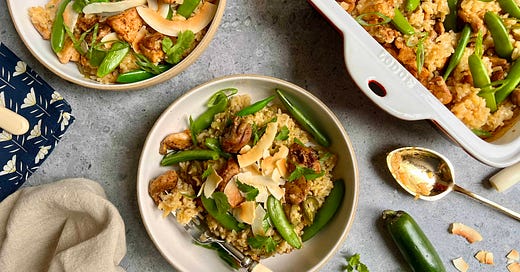




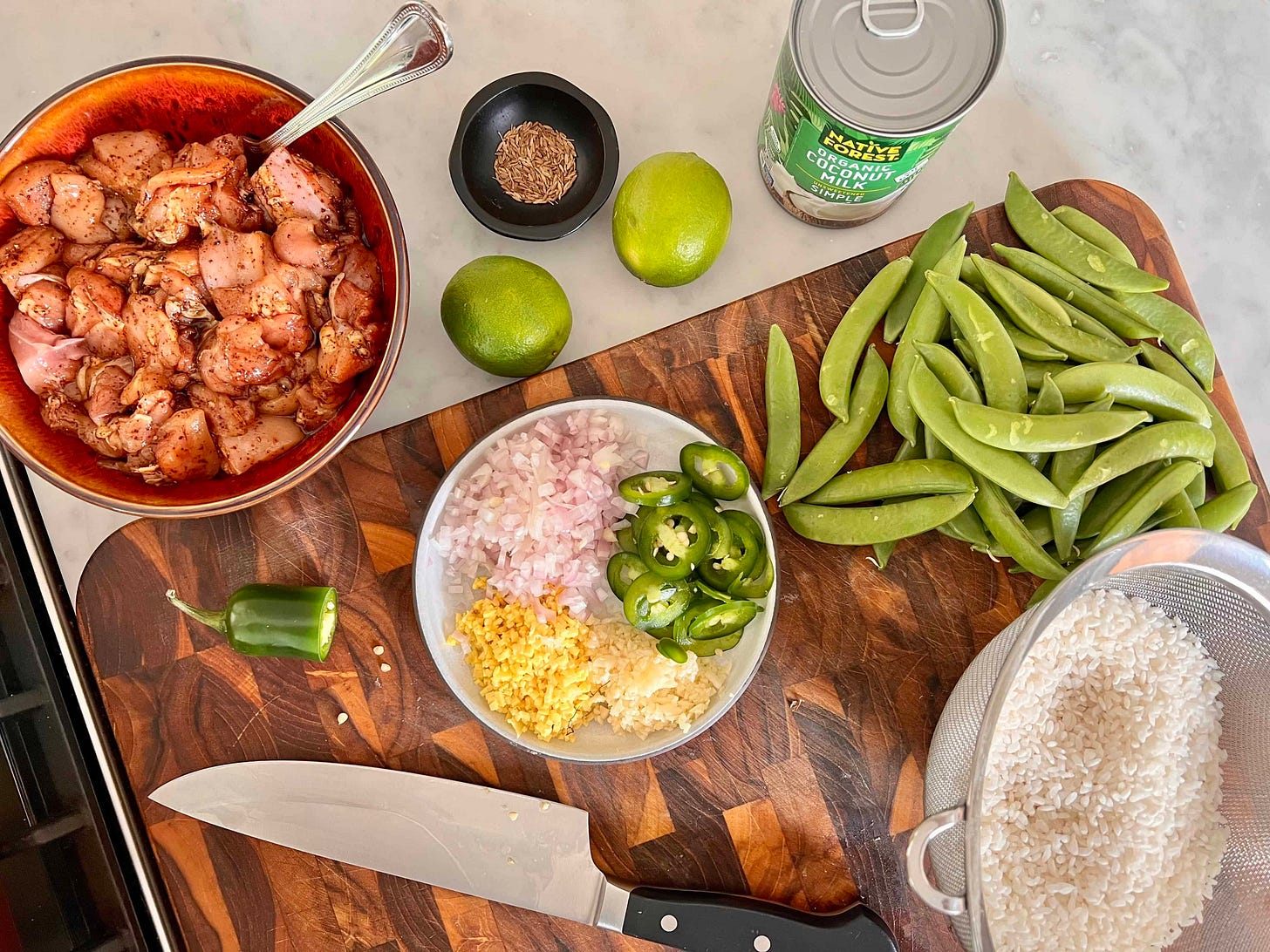

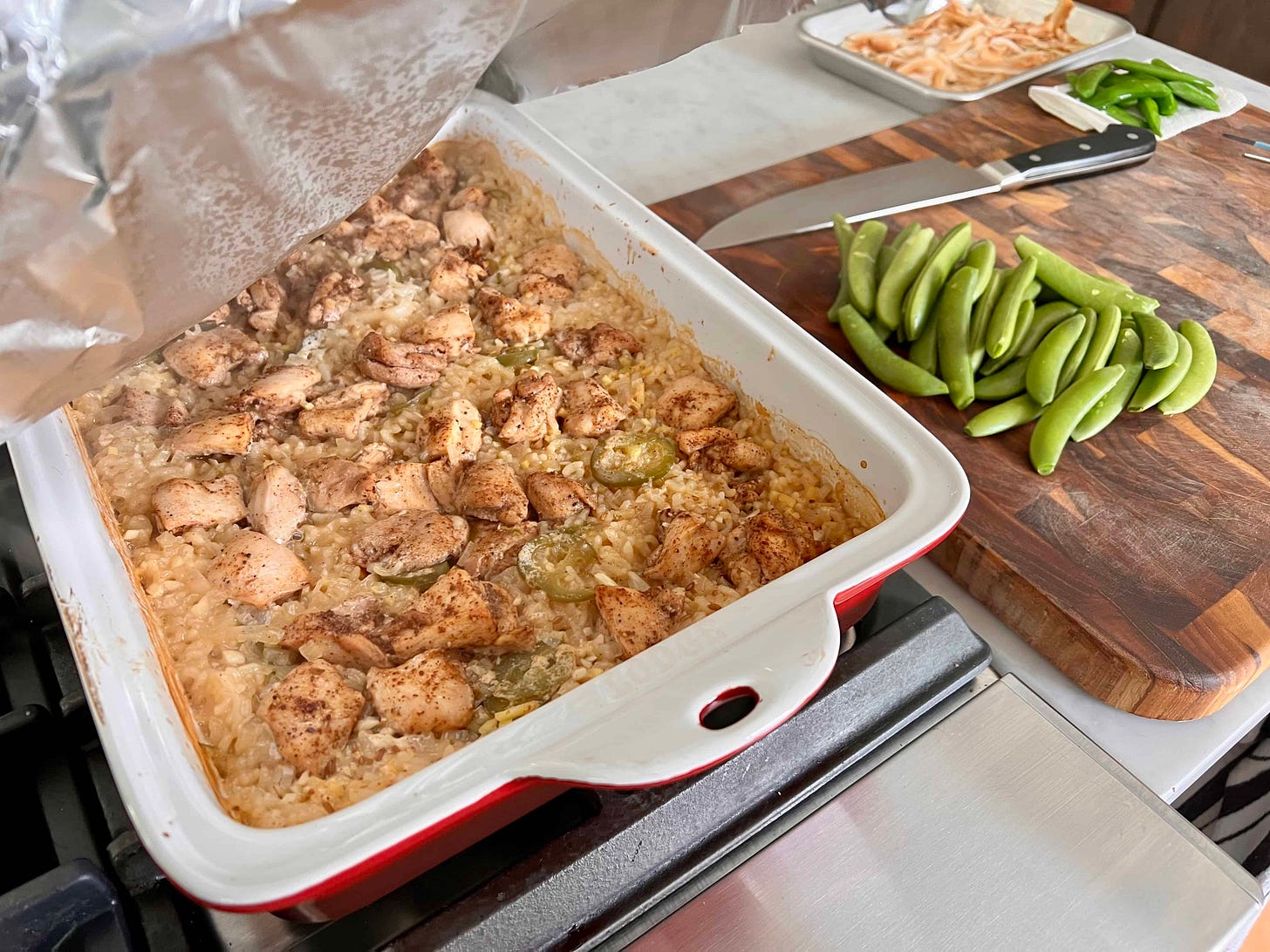
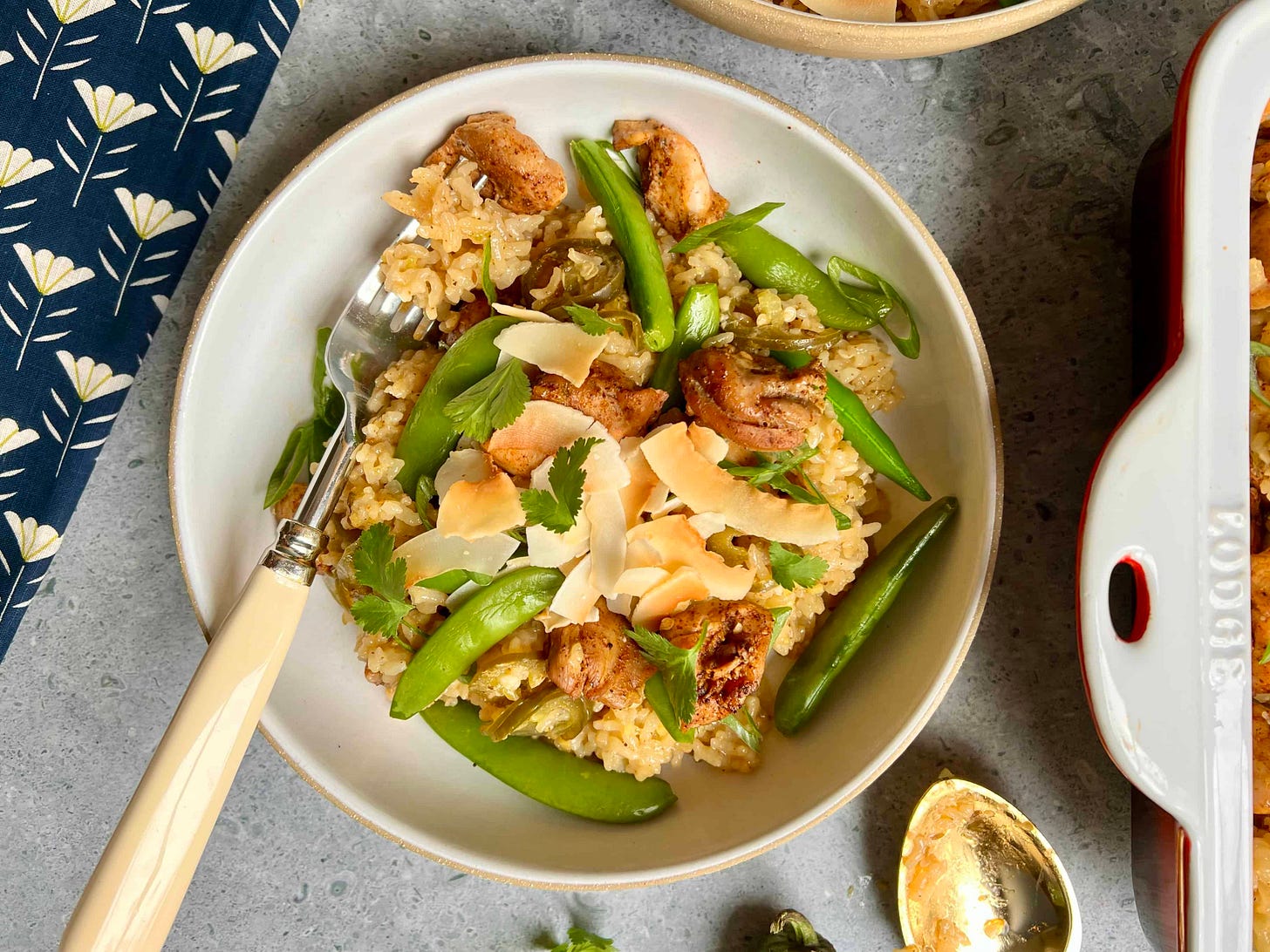
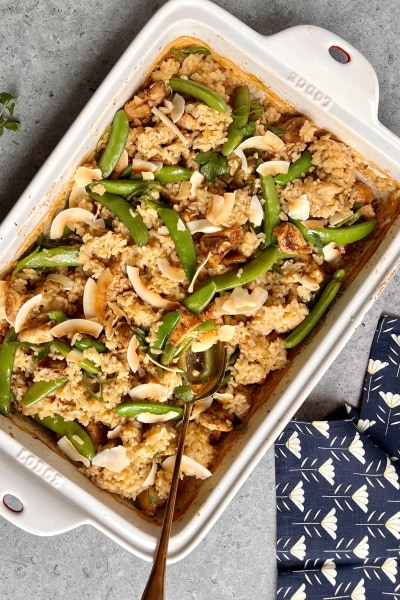
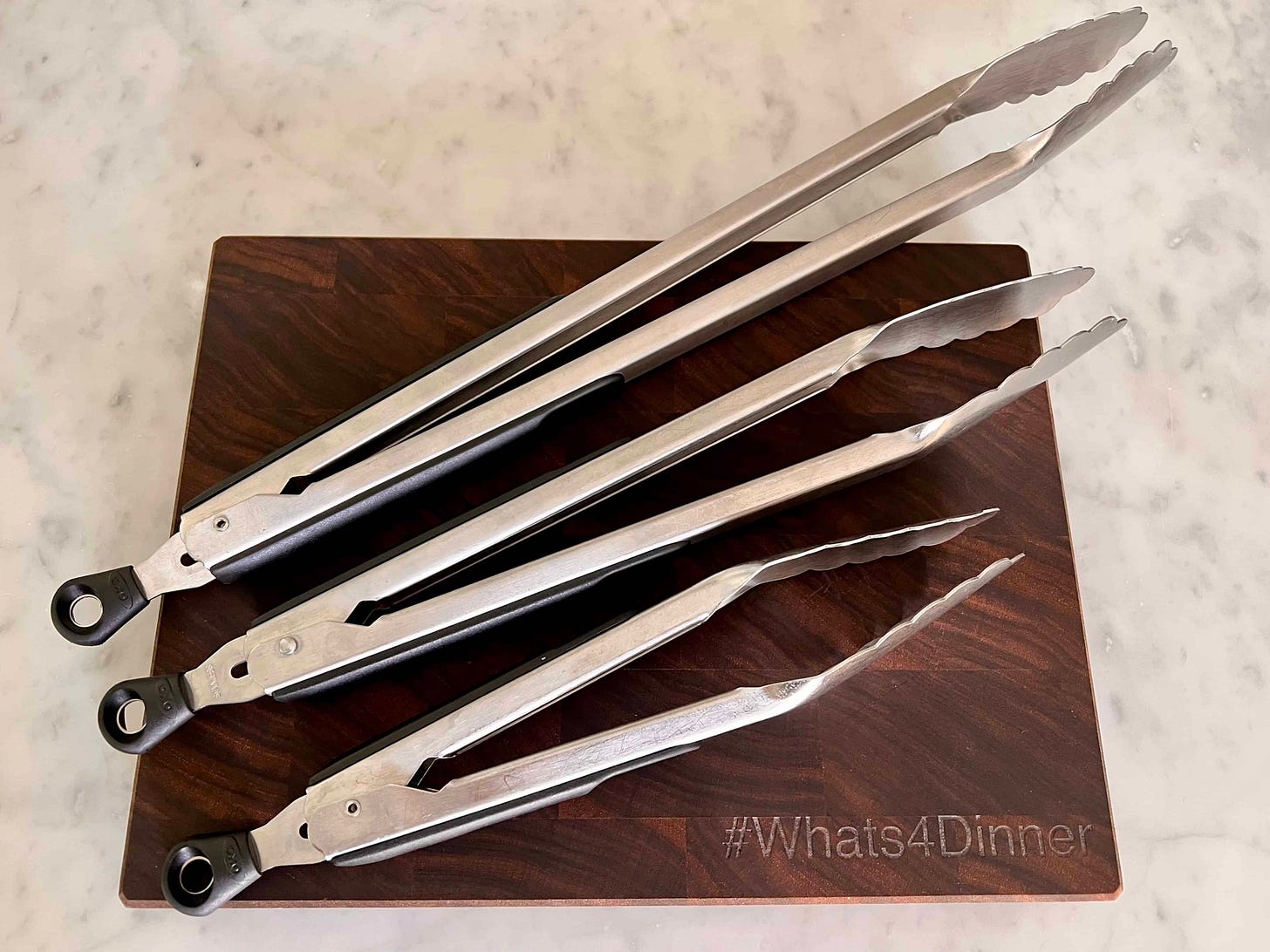
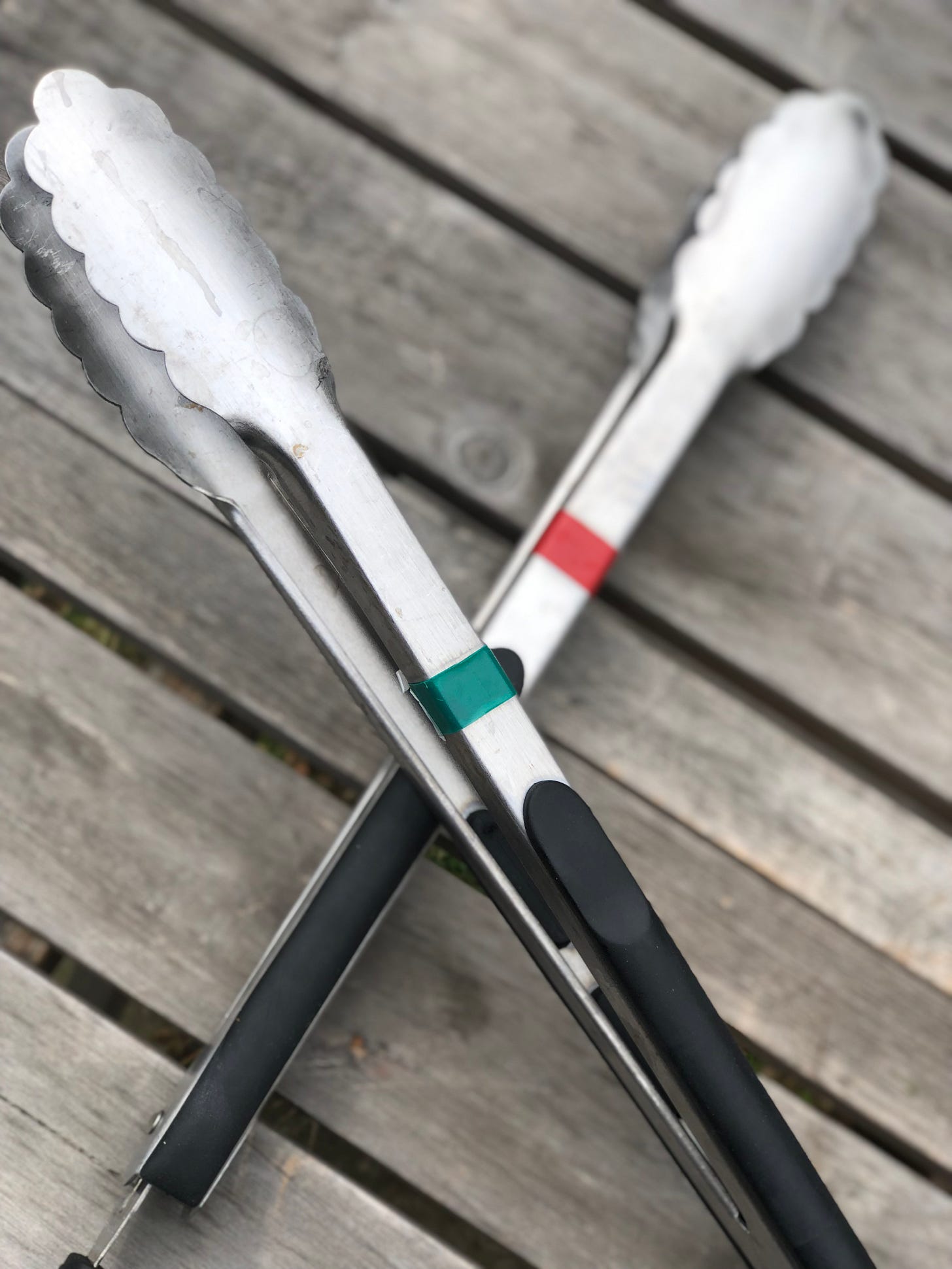
Add your (raw/frozen) vegetable of choice to the top of the rice to steam in the oven.
You will love this recipe!! What are your other kitchen essentials?